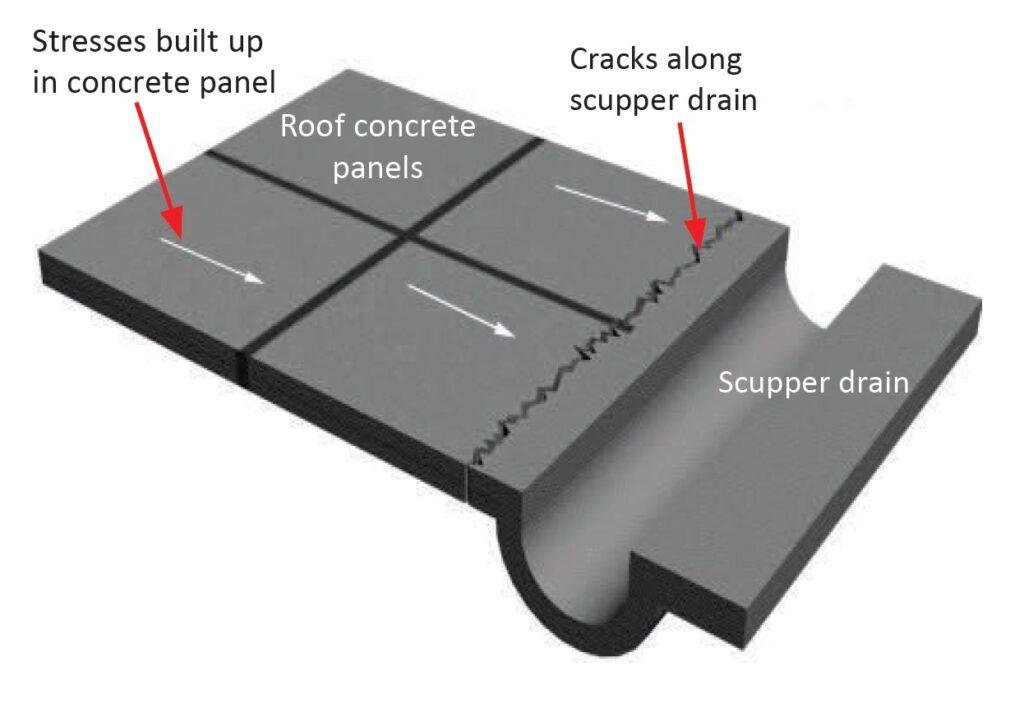Case 1
- Introduction
- Causes of Defects
- Good Practices
- Standards
- Maintenance and Diagnostics
- Remedial
- Similar Cases
- References
Cause of Defects
Stress may develop along the horizontal edge of the scupper drain because of movement due to thermal expansion or external force applied on the roof concrete panels. The jointing edge of the concrete panels to the scupper drain is weaker which may be due to improper design of the thermal joints such as inadequate sealant depth to width ratio, sealing with weak materials (sealant). As such, crack line appears along the jointing edges.

Concrete is strong in compressive but weak in tensile strength. Cracking occurs when the tensile stresses exceed the tensile strength of the material. Tensile stresses on a concrete roof deck could be built up due to shrinkage, thermal and/or moisture contraction/expansion, restraint to shortening/loading, differential settlement/movement, corrosion, alkali–silica reaction, etc.
Cracking on a roof deck is a concern as it could lead to water leakage and also provide easy access for the infiltration of aggressive substances to the level of reinforcing steel, resulting in corrosion. Cracks often found on concrete roof decks are at stress-concentrated areas such as openings, penetrations, upturns, corners, interfaces and joints.
Thermal Movement
Thermal condition difference on the different times of the day may have caused periodical expansion and contraction of the various concrete structure. This periodical expansion and contraction results in crack lines forming and they widen and lengthen with time.
Uneven earth settlement
All new constructions will experience settlement due to exertion of loads on the freshly compacted soil for the initial 5-10 years of its life. Even settlement will not threathen the structure’s integrity whereas uneven settlement will give signs of structural deterioration via cracking.
Precast components
The scupper drain could be a precast component and is cast in factory and brought on site and finished with the cast in-situ concrete roof. The jointing could have been done poorly due to poor workmanship during casting. This may lead to concrete cracking.
Insufficient curing of concrete
For example, if the curing of concrete is not done properly and there is excessive rapid evaporation of water from the surface of the concrete will lead to excessive plastic shrinkage cracks on the surface.
In addition early thermal contractions may also induce in formation of micro-cracks. It is formed when the concrete dissipates heat of hydration and adjacent structures posed external restrain on the concrete resulting in the formation of cracks upon contraction.